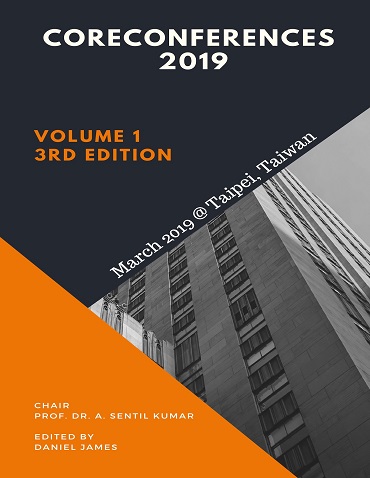- Publication Meta:Value
- Short Title:CC Batch A 2019
- Publisher:ASDF, India
- ISBN 13:978-93-88122-06-1
- ISBN 10:93-88122-06-2
- Language:English
- Type:Hard Bound - Printed Book
- Copyrights:CC Batch A Organizers/DCRC, London, UK
- Editor-in-Chief:Dr A Senthilkumar
- Conference Dates:20 - 21, March 2019
- Venue Country:Taipei, Taiwan
- Submitted Papers:227
- Acceptance Rate:8.51%
- Website:www.coreconferences.com
Welcome to ASDF Electronic Digital Library!
CoreConferences 2019
CoreConferences 2019
International Conference on Climate Change Adaptation and Multidisciplinary Issues 2019
Paper 011
Combating Climate Change and Land Degradation in The West African Sahel: A Multi-Country Study of Mali, Niger and Senegal
S A Igbatayo1
1Head, Department of Economics & Management Studies, AFE Babalola University, Nigeria
Abstract
The West African Sahel is a vast ecological zone separating the Sahara Desert to the north and Sudanian savannah to the south; traversing Senegal, Mali, Burkina Faso, Niger, northern Nigeria and Chad. With a population estimated at more than 60 million people, the region features a multiplicity of development challenges. It is home to some of the world's most impoverished people, whose livelihoods are mostly reliant on rain–fed agriculture. Characterized by semi–arid vegetation, the West African Sahel is one of the most environmentally degraded ecosystems in the world. The region faces severe and recurring bouts of droughts since the 1980s, jeopardizing environmental sustainability. During the past four decades, the West African Sahel has witnessed below–average annual precipitation, with two severe drought periods in 1972–1973 and 1983–1984, in a development that undermined agricultural productivity and spawned severe land degradation. Various studies have predicted even more severe climate variability and change in the region, with drier and more frequent dry periods expected. The intergovernmental Panel on climate change (IPCC, 2007) revealed a decline in annual rainfall in West Africa since the end of the 1960s, with a reduction of 20% to 40% observed in the periods 1931–1960 and 1968–1990. Repeated droughts, fuelled by climate change, have undermined land productivity, turning arable soils into marginal lands, and rendering land resources vulnerable to such anthropogenic activities as over–grazing, agricultural intensification and deforestation, which are common practices across the region. The major objective of this paper is to shed light on climate change and land degradation patterns in the West African Sahel. It employs empirical data to analyse the trends, with particular emphasis on Mali, Niger and Senegal. The study reveals considerable threats posed by the twin scourges of climate change and land degradation to food security, environmental sustainability and regional stability. It also presents a policy framework underpinned by climate change mitigation and adaptation strategies, formalizing land rights for farmers, subsidizing farm inputs, creating grazing reserves for pastoralists and deepening poverty reduction strategies.
Keywords
Author's Profile
Author profile can be generated and linked through our partners World Book of Researchers. To include your profile online Click Here. After it is approved, please email to edlib @ asdf.res.in to create a link with all the papers.
e-AID
CoreConferences.2019.011
Cite this Article as Follows
S A Igbatayo. Combating Climate Change and Land Degradation in The West African Sahel: A Multi-Country Study of Mali, Niger and Senegal. International Conference on Climate Change Adaptation and Multidisciplinary Issues (2019): 06. Print.
© 2010 - by EDLIB .
All Rights Reserved.

